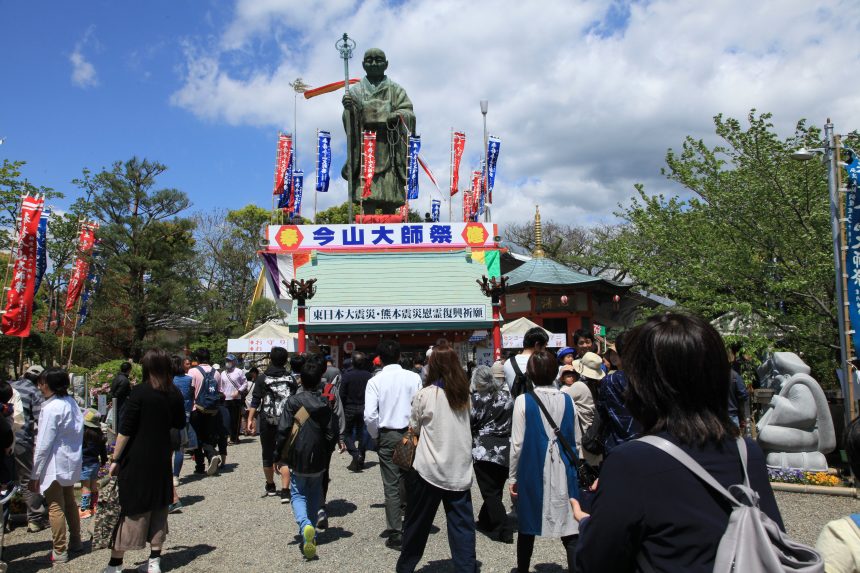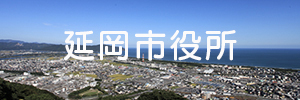Japan’s highest Kobo-Taishi statue

This post is also available in: 日本語 한국어 简体中文 繁體中文
Nobeoka city holds “Nobeoka Taishi Matsuri”, an annual-celebrating birthday festival of Kobo Taishi on the third Friday, Saturday and Sunday in every April. Kobo Taishi is the originator of Shingon Buddhism who is said to have passed away on May 21st, 835. The date is converted roughly to the mid-April in new calendar. It is one of three major festivals in spring in Kyushu District, where people hold a memorial serve and return thanks to this great Buddhist.
This festival tracks back to the year 1839, when Taishi’s behavers in Nobeoka wanted to calm down a huge epidemic there. They went out to Koyasan Kongobuji Temple (in Wakayama prefecture) to collect contributions for building Taishi’s seating statue. The statue is the principal statue now. It has been laid in Taishi-an, the predecessor of current Taishi-do hall.
The original Taishi-do hall was built by Tetsuzen MARUKI in 1918, whose holy name was Konzan-Taishi First. He was originally the 13th chief priest at Zensho Temple (Tendai Buddhism). He was a person of virtue and endeared himself to neighbors regardless of their religions. One day at that time, a problem came up among the behavers how to maintain the Taishi-do hall. They, as an all-religion group, asked rabbi Tetsuzen if he could take care of the hall. The rabbi said yes and had it registered as a kind of Tanritsu, which means it would not belong to any comprehensive religious group.
Then Guyu NONAKA, the successor of Tetsuzen, had a hope of building Japan’s largest Taishi statue. It was completed and inaugurated on 18th April in 1957, which has a 17-meter high (including 10 meter of its base) and 11-ton weight. The total expense was about 1.7 million yen by the value of money of the day, which would be over 200 million yen now.







